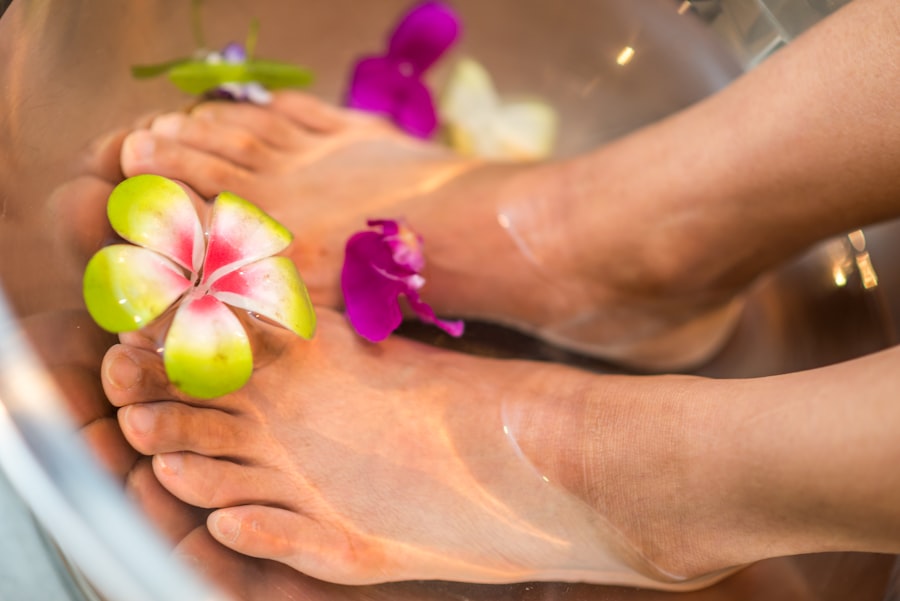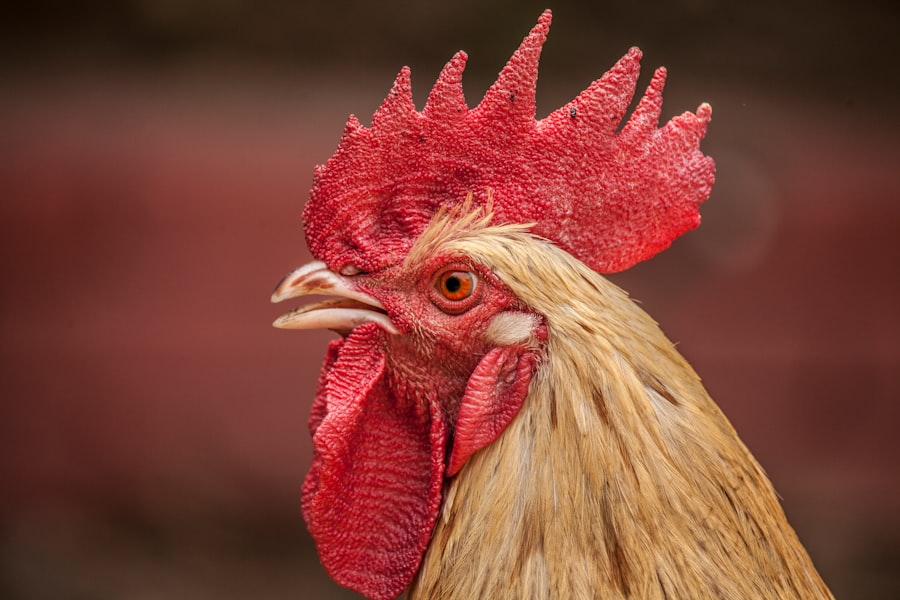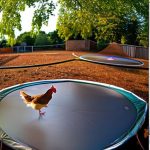Scale mites, or scaly leg mites, are microscopic parasites that infest chickens’ legs and feet. These mites burrow beneath the scales, causing irritation, inflammation, and the formation of crusty, raised scales. Untreated infestations can result in discomfort, pain, and potential lameness in chickens.
Severe cases may lead to deformities and permanent damage to the birds’ legs and feet. Scale mites can spread rapidly within a flock, potentially causing widespread infestations and economic losses for poultry farmers. These parasites are prevalent in both backyard flocks and commercial poultry operations.
Warm and humid environments provide ideal conditions for scale mites to thrive, making chickens in such settings particularly vulnerable to infestations. The impact of scale mites on chicken health and well-being can be substantial, affecting their overall quality of life and productivity. Given the potential consequences of scale mite infestations, it is essential for poultry farmers and backyard chicken keepers to implement preventive measures and timely treatments.
Regular monitoring, proper hygiene practices, and prompt intervention when infestations are detected are crucial steps in managing this common poultry health issue.
Table of Contents
- 1 The Practice of Dipping Chicken Feet and its Potential Benefits
- 2 Understanding the Mechanism of Dipping in Preventing Scale Mites
- 3 Other Methods for Preventing and Treating Scale Mites in Chickens
- 4 Potential Risks and Drawbacks of Dipping Chicken Feet
- 5 Tips for Properly Dipping Chicken Feet to Prevent Scale Mites
- 6 The Effectiveness of Dipping Chicken Feet in Keeping Scale Mites Away
- 7 FAQs
Key Takeaways
- Scale mites are tiny parasites that can cause discomfort and health issues for chickens.
- Dipping chicken feet in a solution can potentially help prevent scale mites and improve overall foot health.
- The process of dipping creates a protective barrier on the chicken’s feet, making it difficult for scale mites to infest.
- Other methods for preventing and treating scale mites include using natural oils and maintaining a clean coop environment.
- While dipping chicken feet can be beneficial, there are potential risks such as skin irritation and the need for regular reapplication.
The Practice of Dipping Chicken Feet and its Potential Benefits
How Dipping Works
Dipping chicken feet involves submerging the bird’s legs and feet in a liquid solution, typically containing ingredients known for their insecticidal and soothing properties. This practice is believed to help suffocate and kill the mites while also softening the scales and promoting healing of the affected areas.
Benefits of Dipping Chicken Feet
There are several potential benefits associated with dipping chicken feet. Firstly, it provides a direct and targeted approach to treating scale mite infestations, as the solution comes into direct contact with the affected areas. Additionally, dipping chicken feet can help soothe the irritation and discomfort caused by the mites, providing relief to the affected birds.
Preventing Future Infestations
Furthermore, regular dipping can help prevent future infestations by creating an inhospitable environment for mites on the chicken’s legs and feet.
Understanding the Mechanism of Dipping in Preventing Scale Mites

The mechanism behind dipping chicken feet in preventing scale mites lies in the properties of the solution used and its effects on the mites and the affected areas. The liquid solution typically contains ingredients such as oils, acids, or other natural compounds known for their insecticidal properties. When the chicken’s feet are submerged in the solution, these ingredients come into contact with the mites, suffocating and killing them.
Additionally, some solutions may have a repelling effect on mites, making it less likely for them to reinfest the treated areas. In addition to its insecticidal properties, the solution used for dipping chicken feet may also have soothing and healing effects on the affected areas. Ingredients such as oils or herbal extracts can help soften the raised scales caused by the mites and promote healing of the irritated skin.
This can provide relief to the affected birds and aid in their recovery from scale mite infestations.
Other Methods for Preventing and Treating Scale Mites in Chickens
While dipping chicken feet is a popular method for preventing and treating scale mite infestations, there are other approaches that can be used in conjunction with or as alternatives to dipping. One common method is to regularly clean and inspect the chicken coop and nesting areas to remove any potential hiding places for mites. Keeping the coop clean and dry can help create an inhospitable environment for mites and reduce the risk of infestations.
Another approach is to use dust baths or diatomaceous earth to control mite populations. Dust baths provide chickens with a natural way to clean themselves and may help control external parasites such as mites. Diatomaceous earth, a natural powder made from fossilized algae, can be applied to the chicken’s legs and feet to help control mite infestations.
Additionally, there are commercial products available specifically designed to prevent and treat scale mite infestations in chickens. These products may come in the form of sprays, powders, or ointments that can be applied directly to the affected areas or used to treat the entire flock.
Potential Risks and Drawbacks of Dipping Chicken Feet
While dipping chicken feet can be an effective method for preventing and treating scale mite infestations, there are potential risks and drawbacks that should be considered. One potential risk is the use of harsh or toxic ingredients in the dipping solution, which could be harmful to the chickens if not used properly. It is important to use safe and natural ingredients when preparing the dipping solution to avoid any adverse effects on the birds.
Another drawback is the potential for stress or discomfort caused by the dipping process itself. Some chickens may not be accustomed to being handled or having their feet submerged in liquid, which could cause stress or agitation. It is important to handle the birds gently and ensure that they are comfortable during the dipping process to minimize any potential negative effects.
Furthermore, dipping chicken feet may not be a standalone solution for severe scale mite infestations. In some cases, additional treatments or interventions may be necessary to fully eradicate the mites and promote healing of the affected areas.
Tips for Properly Dipping Chicken Feet to Prevent Scale Mites

Choose a Gentle and Natural Solution
When preparing the dipping liquid, it is essential to use a gentle and natural solution to ensure the safety and well-being of the birds. Ingredients such as oils, herbal extracts, or diluted natural insecticides can be effective in preventing scale mites while minimizing potential harm to the birds.
Handle Birds with Care
It is crucial to handle the birds gently and calmly during the dipping process to minimize stress or discomfort. Providing a calm and quiet environment during dipping can help reduce any potential negative effects on the birds.
Maintain a Regular Dipping Schedule
To ensure ongoing prevention of scale mite infestations, it is important to maintain a regular schedule for dipping chicken feet. Regular dipping can help maintain healthy legs and feet for the birds while minimizing the risk of infestations.
The Effectiveness of Dipping Chicken Feet in Keeping Scale Mites Away
In conclusion, scale mite infestations can have a significant impact on the health and well-being of chickens, making it crucial for poultry farmers and backyard chicken keepers to take proactive measures to prevent and treat these infestations. Dipping chicken feet has gained popularity as a method for preventing scale mite infestations due to its targeted approach and potential benefits in suffocating and killing mites while soothing and healing affected areas. While dipping chicken feet can be an effective method for preventing scale mite infestations, it is important to consider other approaches such as regular cleaning of the coop, dust baths, diatomaceous earth, or commercial products as part of a comprehensive strategy for controlling mite populations in chickens.
By understanding the mechanism behind dipping chicken feet, using safe and natural ingredients, handling the birds gently during the process, and maintaining a regular schedule for dipping, poultry farmers and backyard chicken keepers can effectively prevent scale mite infestations and promote healthy legs and feet for their birds.
If you’re interested in learning more about poultry care, you might want to check out this article on what to feed ducks. It’s important to provide the right nutrition for all types of poultry, including ducks, to keep them healthy and thriving.
FAQs
What are scale mites and why are they a problem for chickens?
Scale mites are tiny parasites that infest the legs and feet of chickens, causing irritation, discomfort, and potential health issues. They can also lead to scaly leg mite infestations, which can be difficult to treat and manage.
How does dipping chickens’ feet help keep scale mites away?
Dipping chickens’ feet in a solution, such as a diluted permethrin or mineral oil mixture, can help suffocate and remove scale mites from the legs and feet of chickens. This can help prevent infestations and keep the birds healthy.
What are some other methods for preventing and treating scale mites in chickens?
In addition to dipping chickens’ feet, other methods for preventing and treating scale mites in chickens include regularly cleaning and inspecting the coop, using dust baths with diatomaceous earth, and providing a well-balanced diet to support overall chicken health.
Are there any potential risks or drawbacks to dipping chickens’ feet?
While dipping chickens’ feet can be an effective method for preventing scale mites, it’s important to use the proper solution and follow recommended guidelines to avoid any potential risks or drawbacks. Overuse or misuse of certain solutions can be harmful to the chickens. It’s always best to consult with a veterinarian or poultry expert for guidance.
Meet Walter, the feathered-friend fanatic of Florida! Nestled in the sunshine state, Walter struts through life with his feathered companions, clucking his way to happiness. With a coop that’s fancier than a five-star hotel, he’s the Don Juan of the chicken world. When he’s not teaching his hens to do the cha-cha, you’ll find him in a heated debate with his prized rooster, Sir Clucks-a-Lot. Walter’s poultry passion is no yolk; he’s the sunny-side-up guy you never knew you needed in your flock of friends!







